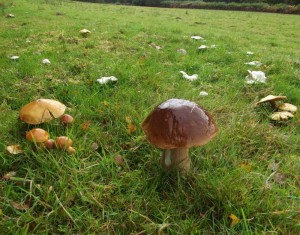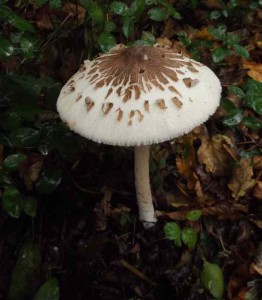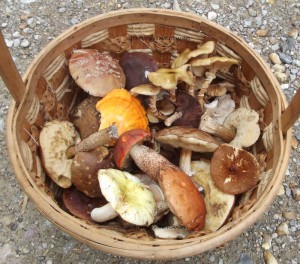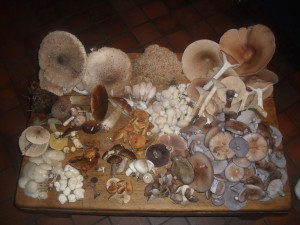Email: geoffdann@hotmail.com
Phone: 07964 569715
29/10/2014
I have been putting off blogging, waiting for the autumn that still hasn’t come. We are now two days away from November, and I am still walking around in not much more than a T-shirt. And it has been a weird year for fungi.
The end of August and start of September were superb – plenty of boletes around, including some rare ones, as well as russulas and amanitas and all manner of late summer and early autumn species. Then it all went wrong. After the driest September on record, by early October there was very little in the way of fungi to be found, and I was praying for rain. But the rains, when they finally came at the start of October, did not bring a glut of fungi. In fact for two weeks it seemed to make no difference at all – still no mushrooms, just a bit more mud. Then finally, a couple of weeks ago, there was some sort of recovery, although it is incredibly patchy, both in terms of locations and selection of species. This photo of one small area where several species were fruiting in abundance was the exception to the rule, and may have been partly caused by the fact the nearby larch trees were dying – apparently sometimes symbiotic fungi go a bit crazy if they their partner trees are dying. (Although The Miller (Clitopilus prunulus) is one of the few species that has been doing better than normal.) Anyway, as things stand, with temperatures still considerably higher than normal for this time of year, there are still great swathes of woodland where there are almost no fungi at all. In some other locations there is quite a lot of stuff to be found, but even in those places there are all sorts of things that are still missing, or doing very badly indeed.
One group that is doing very well indeed are the parasols – all of them. There has been a second flush of “normal” parasol mushrooms (Macrolepiota procera), including some very large specimens, the shaggy parasols (Chlorophyllum rhacodes) are doing well, and their more obscure relatives such as Macrolepiota konradii, with its distinctive star-patterned cap, are all having their best year in a long time. Other exceptions to the general malaise are the Suillus species, especially the Larch Bolete (S. grevellei).
Only in the last two days have I begun to see a more general improvement, although I say these words with trepidation and wouldn’t be remotely surprised if it’s just another blip. I have, however, seen winter chanterelles (Craterellus tubaeformis) and Jersey Cow Boletes (Suillus bovinus) starting to come through in some places. These are later-season fruiters.
What is going to happen next? I wish I knew. I’m hoping that once the temperature drops – as it must surely do some time very soon – we are going to have a massive glut of fungi, as loads of species that have been waiting for their moment all go for it at the same time. But since predicting what the fungi are going to do is a mug’s game, I’m not going to predict that. 2014 might yet just turn out to be a poor year for fungi. We will see. Soon, hopefully…




